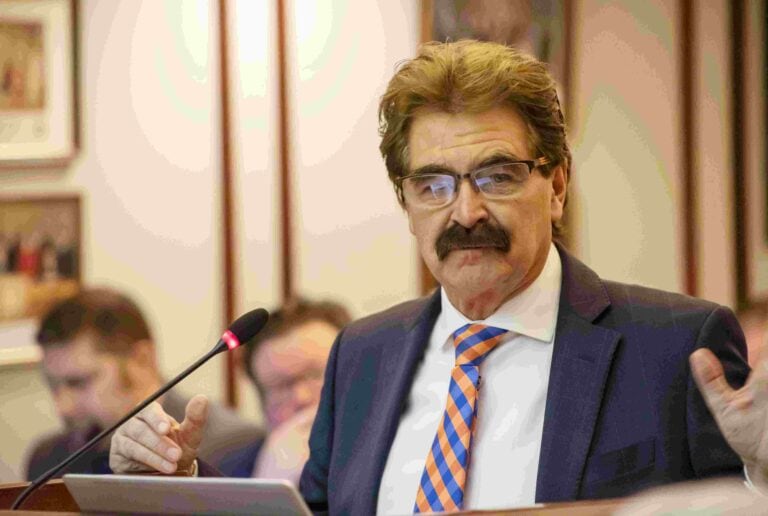Dr. William Brown is a professor of neurology at McMaster University and co-founder of the Infohealth series at the Niagara-on-the-Lake Public Library.
Dr. William Brown
Special to The Lake Report
It’s been quite the year since a previously unknown coronavirus emerged in China, only to wreak havoc with millions of lives around the globe, striking hardest the old, the infirm and those confined and unable to escape its reach.
What kept the virus in check were simple time-proven measures – wearing masks, social distancing and avoiding get-togethers except for those in our closest and most familiar bubbles. Those simple measures and widespread lockdowns finally brought the massive surge created by the Christmas season under control in Ontario, much of the United States and the U.K. – with a difference.
The U.K. has been both a cautionary tale about the consequences of too late lockdowns and an example of how to roll out a successful vaccination program. Israel is often touted as an example of a can-do country in getting its citizens vaccinated but it is a small country used to getting things done in emergencies (with the caveat that the program hasn’t been extended to the Palestinians except those with Israeli passports and health care workers).
The U.K. is a better example to consider. First, like the Israelis, science in the U.K. is world-class. Much of what we know about this virus has come from the U.K. and its partnerships with others such as South Africa, not the U.S. this time around and certainly not Canada.
PM Boris Johnson has made his share of mistakes during this pandemic – what western leaders haven’t except perhaps New Zealand’s?
But at least Boris holds regular, widely viewed updates on where the U.K. is and where it is headed with the pandemic and, in a thoroughly U.K. fashion, he usually gets grilled on his answers. That’s what we need.
The U.K. also created an effective, cheap and easy-to-transport vaccine through a co-operative effort between an Oxford University team and AstraZeneca. Lastly on the U.K. front, I’m impressed with how the vaccine rollout is going there.
They’re way ahead of the U.S. and more so Canada and have done it with class. My screensaver these days is a picture I love and admire of over 40 senior citizens seated in the orderly fashion proscribed by distancing and waiting patiently for the jab in the main body of Salisbury Cathedral.
And while some toy with their cellphones, others are actually reading – so British. We are many months behind the U.K. and the difference is telling for what is missing here in Canada – grit, determination and, at the top, leadership.
Most worrisome to me is the fact that the longer this virus hangs around and multiplies globally, the greater the risk that some truly nasty variants will emerge. We’ve had a taste of that with the first four variants, all of which are more easily transmissible.
Also worrisome is the growing evidence that at least two of the variants (the South African and Brazilian) may have found a way around at least part of the body’s immune system – the very antibodies that attack the spikes on the virus, against which most vaccines have been designed. Now a little lesson in viral genetics.
When medieval monks copied sacred texts even the best of them occasionally made a mistake – perhaps leaving out a letter, inserting the wrong letter or even leaving out an entire word. It’s the same with RNA. When infected host cells are co-opted to make thousands of copies of the COVID-19 RNA, mistakes copying the virus sometimes happen. Perhaps a single base is deleted, another base added or perhaps the wrong base is inserted into copies of the virus’s RNA.
Most mistakes make no difference to the capabilities of the virus. That is, unless the mistakes involve the genes responsible for making the proteins in the virus’s spike.
Computer-generated 3-D models of the COVID spike suggest that changing the shape and possibly the charge on the spike proteins might facilitate the ability of the virus to latch onto receptors in the host cell’s membrane, enter the cell’s interior and gain access to the copying machinery within the host cells.
Even minor mutations in the virus’s genome that change as few as one in a thousand amino acids in the spike protein could create a variant virus that is much easier to transmit and, possibly, more deadly. Something that simple probably created the U.K. and South African variants.
Changing the proteins in the spike might also cloak the spike’s proteins from naturally acquired or vaccine created antibodies. For those and other reasons, worldwide sequencing of the genome of the COVID-19 virus is vital to keep up with the changing face of this virus and adapt booster vaccinations to provide added protection against emergent variants that threaten end-runs around the initial vaccines.
As of this moment, there are at least seven virus variants out there and those are the ones we know about. Given that the U.S. hasn’t played much part in tracking new variants, there might well be others out there in North America, and well beyond.
That’s why surveillance – think of this as intelligence work against a different enemy – of the virus’s genome is so important to keep vaccines up to date.
And that’s my update.



.jpg)





